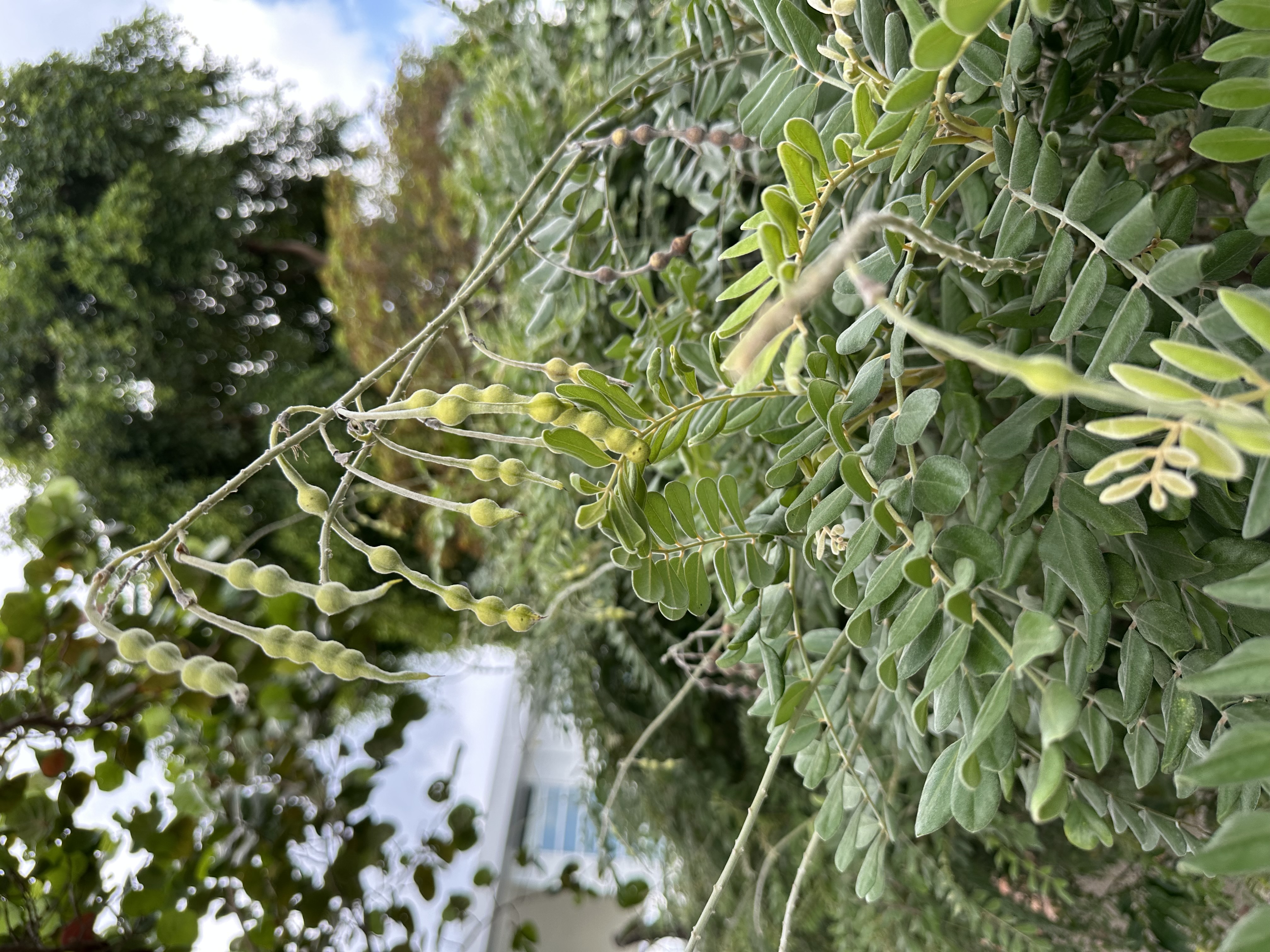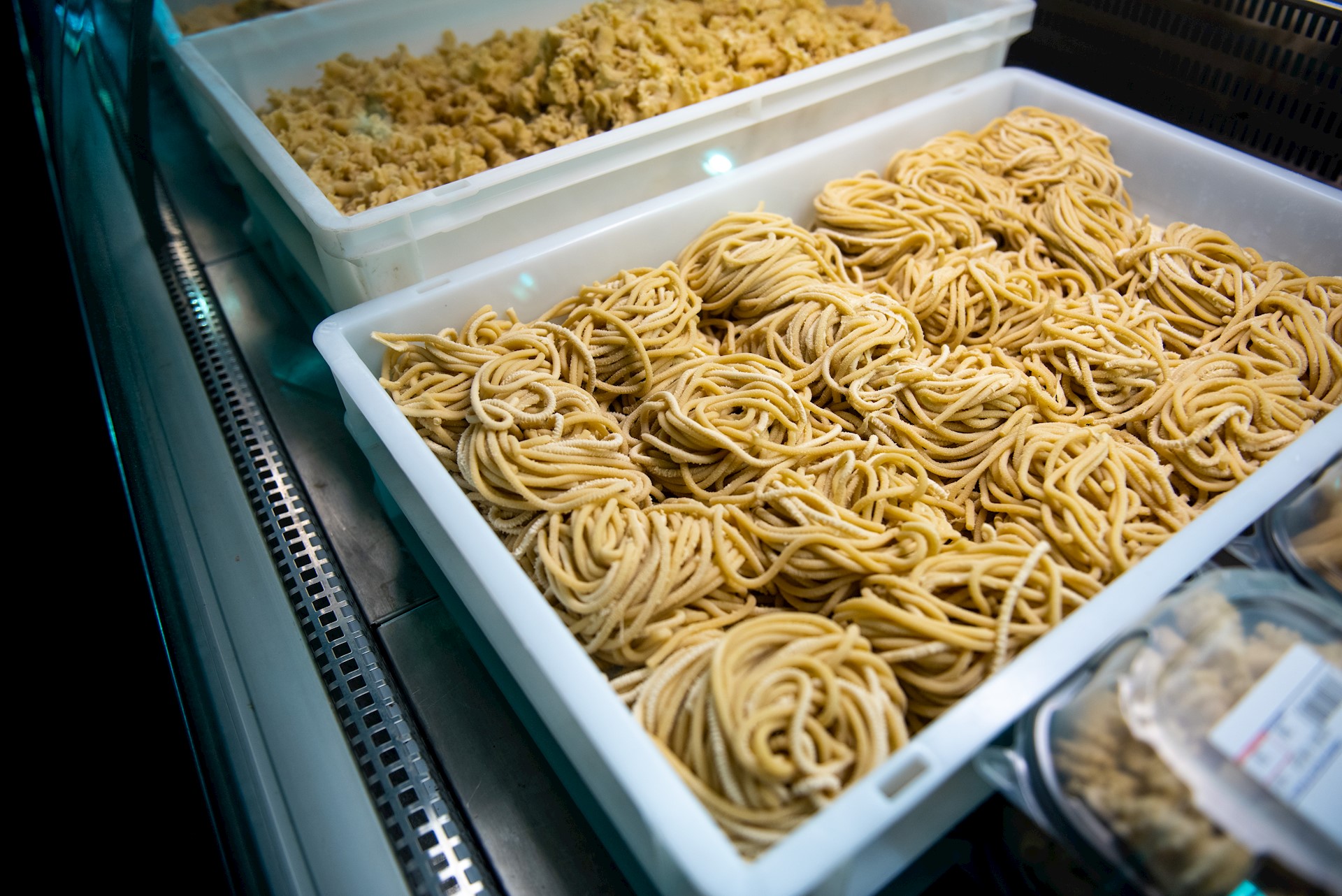
February is often noted for Valentine’s Day, which is celebrated on the 14th of the month. Symbolic of love, people celebrate the holiday in many ways, including the exchange of gifts. Often, these gifts are in the form of flowers, chocolate and jewellery. Therefore, a perfectly acceptable gift would be a necklace — but perhaps this year in lieu of a necklace to wear, why not a necklace to plant in your garden?
At first sight, the seed pod of yellow necklacepod, or Sophora tomentosa var. littoralis, bears a discernible resemblance to a string of pearls. These seed pods are a distinctive characteristic of Fabaceae, the pea family, and assist with identification. Aside from the chic seed pods, yellow necklacepod has further attributes – both visible and invisible to the naked eye – that make it an absolute dynamite plant to add to the landscape.
A delightful evergreen shrub, and sometimes even trained as a small tree, yellow necklacepod has an attractive soft, feathery appearance, partially due to its tomentose (densely covered in small hairs) leaves, which display a blue/grey appearance and are soft to the touch. Again, primarily special to the pea family, the flowers are unique in presence with their dapper cup shape and known ability to attract pollinators. The buttery yellow hue of their flowers on an indeterminate inflorescence are visible year-round, and act like a magnet to butterflies, bees and even small birds.
Moderate in size, it can reach anywhere from 4 to 10 feet in height, with a spread roughly two-thirds its height and a semi-cascading habit. It is native to pantropic regions; however, S. tomentosa var. littoralis is technically native only to a handful of islands in the Caribbean — including Cayman — and parts of Brazil. It is an adaptable shrub, but really prefers sandy, well drained soils, and full sun, which is why it is commonly found in coastal habitats. Yellow necklacepod is also extremely low maintenance and only mildly susceptible to pests and disease. It can tolerate a hard cutback often to maintain size.
Of the notable "invisible" attributes, yellow necklacepod is practically bulletproof when it comes to salt tolerance and drought resistance. Once established, it can thrive for long periods of time with little to no water and will lose its leaves if exposed profusely to salt spray, but flushes out new leaves through an astonishingly quick recovery period.
For this gem, or living piece of jewellery, the name really does say it all. Sophora is derived from the Arabic language, where sophera means a pea-flowered tree. The specific epithet, tomentosa refers to the tomentose leaves, and the variety littoralis means growing by the sea.
Always a respectful nod to the landscape architects at Dart who put tremendous thought into choice and placement of plant material in Camana Bay, yellow necklacepod is planted near the Arts and Recreation Centre at Cayman International School. A true example of responsible choices for the environment and our natural resources, yellow necklacepod won’t drain your energy or your cistern.
This article was first published in the February/March 2025 print edition of Camana Bay Times.


